Audio Version Of The Blog – 9/25/22
Listen to an Audio Version of the Blog
Download:MP3 Audio

Listen to an Audio Version of the Blog
Download:MP3 Audio
My new article on Linkedin “New Antisemitism: Mutation of a Long-lived Hatred”
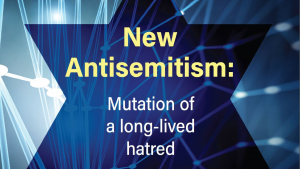
After publishing The Jewish Choice: Unity or Anti-Semitism, I felt that while the explanations in it covered the history of the Jewish people, the book did not address current expressions of the oldest hatred. In light of the exponential rise in antisemitism since the turn of the century, the need to publish such a composition became increasingly urgent. Now, thanks to the great efforts of Norma Livne, the editor in chief of my latest book, the picture is complete.
New Antisemitism: Mutation of a Long-Lived Hatred not only covers the myriad exhibitions of antisemitism around the world, it also details a unique solution that derives directly from the ancient wisdom of our sages.
Current solutions focus on curbing displays of Jew-hatred or fighting it on the legal arena and on social media platforms. However, the results speak for themselves: These methods do not work. At best, they are slowing down overt displays of antisemitism, but they are fighting a losing battle. Already, antisemitism, a taboo until only a few years ago, has become mainstream, a legitimate topic of discussion.
New Antisemitism suggests an additional approach, a more proactive one, to complement the arsenal of weapons against antisemitism. Relying on the legacy of our sages, the book celebrates the power Jewish inner solidarity as an antidote to Jew-hatred. It suggests a revolutionary idea: The world hates Jews only as much as Jews hate one another.
In a reality of escalating violence against Jews on one hand, and Jewish helplessness against it on the other hand, this idea provides a feasible and powerful solution, which requires nothing but resolve on the part of the Jews. For this reason, I believe that New Antisemitism: Mutation of a Long-Lived Hatred is a must-read for anyone who seeks to defeat the indefatigable nature of this social virus, and is willing to employ its long-overlooked, practically free solution that lives in the heart of every Jew, namely Jewish unity.
I wish to convey my deepest gratitude to all the editors, proofreaders, designers, researchers, and everyone who helped in publishing the book for their hard work, and for making it into a composition that can benefit all of humanity, and first and foremost, the Jewish people. They put their heart and soul into the work, and I believe that the world can be a better place thanks to their efforts.
[303433]
 From My Facebook Page Michael Laitman 9/25/22
From My Facebook Page Michael Laitman 9/25/22
Almost every culture celebrates the beginning of the year. Each tradition has its own customs, meals, gifts, and inner meaning. For Jews, celebrating Rosh Hashanah (the beginning of the year) comes with symbolic foods and a day of judgment. This judgment is the heart of Rosh Hashanah.
We can think of the spiritual significance of Rosh Hashanah as an operating system, like Microsoft Windows or Apple IOS. The human race did not come out of nowhere. Evolution has a purpose, and the operating system leads it toward it.
The operating system runs throughout nature, and all creations but humanity follow it instinctively. We, on the other hand, can study it and manipulate parts of it for our benefit.
On Rosh Hashanah, before we taste from the fish’s head, we say a blessing: “May we be the head and not the tail.” These words express our wish not to remain oblivious to the operating system and governed by it unconsciously, but to become aware of it and able to steer our development in a positive direction.
The operating system invariably leads toward a state of harmony and balance among all the elements in reality. It is aiming to bring all of humanity into a state of unity and closeness as though we are all a single warm and loving family. The system does not strive for sameness, to make us all the same, but for complementarity, to make us complement each other so that each of us contributes our unique skills and talents for the common good, and enjoys the contributions of everyone else, just like a loving family where everyone helps everyone else because they care about them.
As we study the system, we gradually realize how opposite we are from the state of closeness and care. These realizations precede Rosh Hashanah, and they are called Selichot (asking forgiveness). Selichot are prayers we say when we feel how opposite we are from the state of balance and mutual care.
The Hebrew word for “prayer,” by the way, is Tefilla, which comes from the word Haflala, namely criminalization. During a prayer, we “criminalize” ourselves, namely discover that we are criminals, and therefore ask for forgiveness. The crime we realize we have committed pertains to the operating system, namely that we have been selfish, thinking of ourselves and loving only ourselves rather than embracing all of creation and working for its favor. In spirituality, selfishness is always the only sin, since every wrong we do comes from thinking only of ourselves.
The physical Rosh Hashanah happens once a year. However, the process of reflection, regret, asking forgiveness, and praying to become more loving is not limited by anything. It can, and should be a constant cycle that we do internally. Each time we complete a cycle of requests for forgiveness, we reach another Rosh Hashanah, until the next realization of selfishness emerges in us through our efforts to correct our egoism and become more caring.
When the cycle of Selichot is over and we reach Rosh Hashanah, we not only wish to be the head and not the tail, we also celebrate the correction of our corrupt qualities. We symbolize this by dipping an apple in honey. The apple represents the heart, and the honey stands for sweetening (correcting) it from selfishness to caring for others.
Another custom is to eat a Rimon (pomegranate). A pomegranate has many seeds in it. Each of them stands for one selfish desire. Eating them stands for correcting them from selfishness to giving, which gives us a feeling of Romemut (elation, note the similarity to the word Rimon).
Finally, on Rosh Hashanah, we blow the Shofar—a festive horn. The blowing of the horn stands for our yearning for correction from carelessness and hatred of others into being loving, connected, and united as one with all the people in the world. The word shofar comes from the Aramaic word Shufra (the best of the best). This is the state we achieve once all our desires have been corrected and we become united as one loving, global family.

[303353]

Michael Laitman, On The Times of Israel: “When Nationalism Serves Humanism”
These tense days, the situation in Israel is exacerbating the social rifts and divisions in the country. While some people decry the loss of national pride, others warn that Israel is becoming a nationalistic, racist state. Is there a healthy dose of patriotism and national pride that does not infringe on the rights of other people? Baal HaSulam says there is, but we must first understand what nationalism and national pride mean for Israel.
Even before the tragedies of World War II and the Holocaust took place, the great 20th century thinker and kabbalist, Baal HaSulam, warned of the consequences of excessive nationalism, fascism, and communism. In June 1940, nine months into the war, he published a paper that he titled The Nation. In the paper, he dedicated a section to discussing the balance between patriotism or as he defined it, “national love,” and humanism.
In those days, before the establishment of the State of Israel, Baal HaSulam felt that denying patriotism altogether would jeopardize the forming Jewish state. At the same time, the dangers of excessive patriotism were already evident. To address the issue, Baal HaSulam suggested “new, fundamental national education,” in order to “reveal and ignite once more the natural national love that has been dimmed within us.”
However, Baal HaSulam stressed that his definition of nationalism was not the one we normally use. In his words, “Here I must stress concerning the above-mentioned national education: Although I aim to plant great love among the individuals in the nation in particular and for the entire nation in general, in the fullest possible measure, this is not at all similar to chauvinism or fascism. We loathe them, and my conscience is completely clear from them. Despite the apparent similarity of the words in their superficial sounds, since chauvinism is nothing but excessive national love, they are essentially far from one another as black from white.
“To easily perceive the difference between them, we should compare them to the measures of egoism and altruism in the individual. …Clearly, the measure of egoism inherent in every created being is a necessary condition in the actual existence of the being. Without it, it would not be a separate and distinct being in itself. Yet, this should not at all deny the measure of altruism in a person. The only thing required is to set distinct boundaries between them: The law of egoism must be kept in all its might,” but only “to the extent that it concerns the minimum existence. And with any surplus of that measure, permission is granted to waive it for the well-being of one’s fellow person.”
Eighty-two years after those words were written, it is clear that we have not found the balance. We still use nationalism to the point where it becomes chauvinism, as Baal HaSulam defined it, or deny it altogether, and risk losing our identity altogether.
I think it is time we introduced healthy nationalism. We should begin with the smallest unit: the nuclear family. First we must rekindle the feeling of natural, instinctive affinity the way families (ideally) feel toward each other. Once we establish what a close family feels like, we should begin to expand this feeling to broader and broader circles until it encompasses the entire nation.
However, we should focus only on the positive, on strengthening our unity, and not only uniting against other parties. It is very easy to unite against a common enemy. However, this is not real unity, and in the absence of an enemy, the union will dissolve at once. We will be able to focus on unity, only if unity is the prime value in and of itself, regardless of external circumstances.
Particularly in Israel, unity must be nurtured to a level that guarantees the existence and security of the State of Israel, but not beyond what is necessary for Israel’s survival. The rest of Israel’s energy should be directed toward advancing the value of unity throughout the world.
Israel’s unique position in the world, due to the constant attention it receives, places it in a unique position to become a model of social cohesion and solidarity that no other nation has. When Israel is united, the nations appreciate and welcome it. Conversely, when Israel is divided, the nations disparage it, claim that it is a racist and nationalistic country, and blame it for everything that is wrong with their lives.
Now that unhealthy nationalism is re-emerging in the world, Israel must set the right example. The more extremist the world becomes, the more it will blame Israel for it.
Therefore, Israel must put its entire focus on internal unity so as to be a model for the world. For this purpose, and only for this purpose, it must defend itself from those who seek to destroy it.
If Israel does not exist, there will be no model of unity for the world. This is why Israel must build its unity, and this is Israel’s only justification for its existence. This is the only possible balance between nationalism and humanism—when nationalism serves humanism.
[303288]
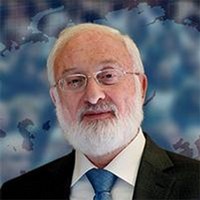 Michael Laitman, On Quora: “Who was The Zohar written for?“
Michael Laitman, On Quora: “Who was The Zohar written for?“
The Zohar was written for people who want to reach life’s peak, the purpose of creation, and strive to change their intention from our inborn egoistic one—reception for personal benefit alone—to one where we bestow, love and positively connect to others.
The Zohar provides the force, called “light,” which makes it possible to invert our intention in such a way, and discover the positive force dwelling in nature within our corrected intention.
Therefore, The Zohar, like the entire Torah, can be either the elixir of life or the potion of death. If we wish to study The Zohar, then we should check our intention for approaching it.
If we wish to change our intention by drawing the light that we can attract through reading The Zohar, then with the help of its study, The Zohar—a commentary on Five Books of Torah—becomes an elixir of life, as it is written, “I [the Creator] created the evil inclination [human egoism] and I gave the Torah for its correction because the light in it returns to the source.”
If we do not strive for an intention to bestow, that is, to return to the source, but our egoistic desires motivate our study of The Zohar i.e. to be fulfilled and to set other goals for ourselves, called “idolatry,” then our study turns into the potion of death and distances us from the purpose of creation.
Therefore, we should take care and remember that while reading The Zohar, we should prepare our intention in order to be granted the positive force of nature: love, bestowal and connection.
Based on the Daily Kabbalah Lesson with Kabbalist Dr. Michael Laitman on May 27, 2010 on “The Book of Zohar: VaIkra.” Written/edited by students of Kabbalist Dr. Michael Laitman.
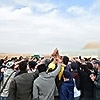 After all the suffering that the Jewish people endured, including losing a third of its population in the Holocaust, we still continue to develop in our egoistic desire to enjoy and do not want to think about the causes of the destruction that occurred. The heart becomes harder and harder and it cannot be softened even by suffering.
After all the suffering that the Jewish people endured, including losing a third of its population in the Holocaust, we still continue to develop in our egoistic desire to enjoy and do not want to think about the causes of the destruction that occurred. The heart becomes harder and harder and it cannot be softened even by suffering.
Everyone dreams only of hiding in some safe, comfortable place where they can live well quietly and so that no one touches them. They cannot rise above this animal welfare to the human level and realize that it is necessary to come out of this shelter to connect with everyone, to build a new state in the world, a fresh atmosphere, and attract a new light into the world.
Humanity is obliged to be united and even if we only start to connect a little in the tens, the world will begin to change.
It is enough to see how the universe began, from the fact that after the Big Bang, individual particles of matter began to gather together and converge more and more until stars and planets were formed from them. We need to try to get together like this.
We are building such a connection in the international Bnei Baruch group so that everyone understands our connection can become the central point of the world around which a field of positive force of the whole reality will arise. In this way we will move toward the correction of the world.
[303113]
From the 2nd part of the Daily Kabbalah Lesson 9/19/22, Writings of Baal HaSulam, The Nation Newspaper
Related Material:
When Will the Awakening of the World Come?
An Invitation to the Celebration of Connection
Blessed Are Those Who Work Together
 The light of Hochma is regarded as the emanated being’s self and vitality. The light of Hassadim is only regarded as light for corrections, for the completion of the emanated being (Baal Hasulam, Study of the Ten Sefirot, Vol. 1, Part 1, Chapter 1).
The light of Hochma is regarded as the emanated being’s self and vitality. The light of Hassadim is only regarded as light for corrections, for the completion of the emanated being (Baal Hasulam, Study of the Ten Sefirot, Vol. 1, Part 1, Chapter 1).
Question: How does a person experience these two lights?
Answer: Initially, a person does not feel the light of Hochma in any way. In our world, when one wants to enjoy something, a person feels only a micro dose of this light. One feels the light of Hassadim only to the extent that one has a will to bestow, to bring pleasure to others. Practically, both lights are initially concealed from us and we must develop ourselves in such a way that we begin to feel them.
Usually one becomes familiar with them through the help of the method of correcting a person, the method of Kabbalah. To the extent that we study in a group, want to come closer to our friends, want to bestow to them like the Creator, and practice the quality of bestowal as much as possible, we start to feel the light of the Creator’s bestowal entering into us.
[302998]
From KabTV’s “The Study of the Ten Sefirot (TES)” 9/4/22
Related Material:
Two Types of Influence of Light
What Is The Light Of Hochma?
Our Entire Life Occurs Between Two Lights – Hochma and Hassadim
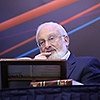 The task of Kabbalists is to tell people, to educate them, that they can reach a state where they begin to feel the upper world, the upper force, the Creator, and themselves in this state. This is why we study.
The task of Kabbalists is to tell people, to educate them, that they can reach a state where they begin to feel the upper world, the upper force, the Creator, and themselves in this state. This is why we study.
But the problem is that learning takes place inside a person when he begins to feel that his connection with other people should be above his own destiny.
The most important thing is the connection between people where they connect into one single whole creation as it was before the shattering of Adam. Kabbalah is engaged in this.
[303049]
From Dr. Laitman’s Conversation with the Georgian Group 9/15/22
Related Material:
The Goal Of A Kabbalist In Relation To The World
The Mission Of The Science Of Kabbalah
What The Science Of Kabbalah Offers
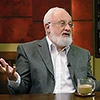 There have only been about a half dozen genuinely important events in the four-billion-year saga of life on Earth: single-celled life, multi-celled life, the differentiation into plants and animals, the movement of animals from water to land, and the advent of mammals and consciousness.
There have only been about a half dozen genuinely important events in the four-billion-year saga of life on Earth: single-celled life, multi-celled life, the differentiation into plants and animals, the movement of animals from water to land, and the advent of mammals and consciousness.
The next big step should be the idea of interplanetary life—an unprecedented journey that will dramatically change and enrich us (Elon Musk).
My Response: I absolutely disagree with this. What will it give us?! Why should the previous stages of development lead us to this last one? Will we fly from star to star? Moreover, we are in such an energetic and physical condition that these flights will cost us hundreds of years! Why do we need to fly? From one meadow to another?
Question: He considers interplanetary development to be the next big step. What do you think is the next big step?
Answer: The next big step will be to reveal the meaning of life. Why did it ever appear out of nothing, and why did the steps he spoke about then begin to develop from it?
Question: Does the person then come to the question “What am I living for?”
Answer: Yes. The further we develop, the more we want to know about our root, about our source. This is what interests us. This is the search for the meaning of life, because everything is encompassed in our root.
Today when we do something, we develop the forces and the data that are in our source.
[302978]
From KabTV’s “News with Dr. Michael Laitman” 6/30/22
Related Material:
“Why are we here? What is the meaning of life? Why do we exist? Why am I asking these questions?” (Quora)
“What’s The Meaning Of Life? Is Happiness The Only Purpose Of Our Lives?” (Quora)
“Can Helping Others Help You Find The Meaning In Life?” (Quora)
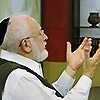 Question: You said that not everyone has the left line. What is the advantage of having or not having it?
Question: You said that not everyone has the left line. What is the advantage of having or not having it?
Answer: In principle, everyone has a soul consisting of two parts: the quality of bestowal (right line) and the quality of reception (left line). However, it can be that there is no third line in its explicit form. The third line aligns both lines, i.e., two opposite qualities in a person and gives the result. It builds out of it the image of “human” person.
There are souls in which this is clearly expressed and there are souls in which this is not. Just like the organs in our body there are more important ones and less important ones. There are some that develop in utero in a certain order faster than others, and there are those that even seem to appear like some kind of tail or other rudimentary organs. That is, a person in his intrauterine development simultaneously undergoes an internal development.
Thus, when organs develop in a person, each of them is important in itself. Although there are more important and less important ones, in the end they are one system.
There are no more important or less important things in the spiritual world because from the point of view of similarity to the Creator if you lack some cell in your body, it means that you are not similar to Him. According to this rule, there are no insignificant things in spirituality because spirituality is perfection. If a point is missing, then this is already imperfection.
Therefore, we must understand the importance of every person in the world. Each thing in the universe has its own clear purpose and it is forbidden to destroy it. Everything that is given by nature must exist.
Comment: You said that the Creator is the right line and that the middle line does not exist.
My Response: Yes, but when the quality of bestowal has to be adapted within us, it cannot be received only in the right line. Where is the quality of reception?
The right line is only the quality of bestowal, so the left line is necessary. The left one is only reception; it can only be the opposite of the Creator. Then the middle line arises, which—on the basis of this symbiosis, this connection, the mutual penetration of two lines into each other during shattering, during correction, and during mutual integration with each other—begins to work.
Question: Does it mean that striving is important, without leaving the left line one should strive toward the right one?
Answer: Yes. If you take the left line and go with it to the right one, you get the middle line.
[302687]
From KabTV’s “I Got a Call, Left Line“ 4/25/13
Related Material:
Right And Left Lines
In Harmony Between Two Lines
The Mechanics Of Ascension